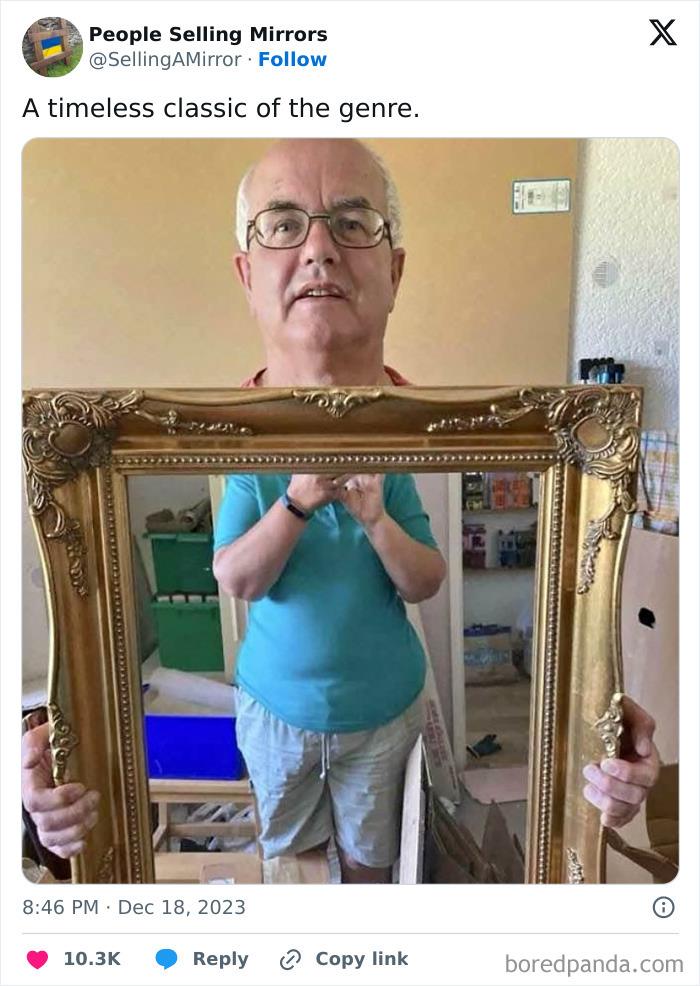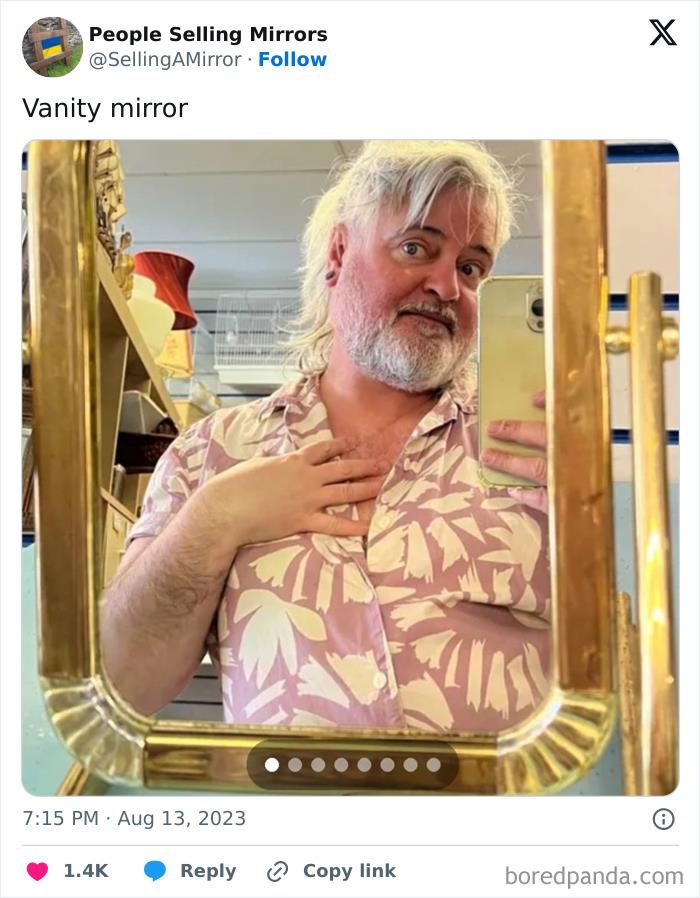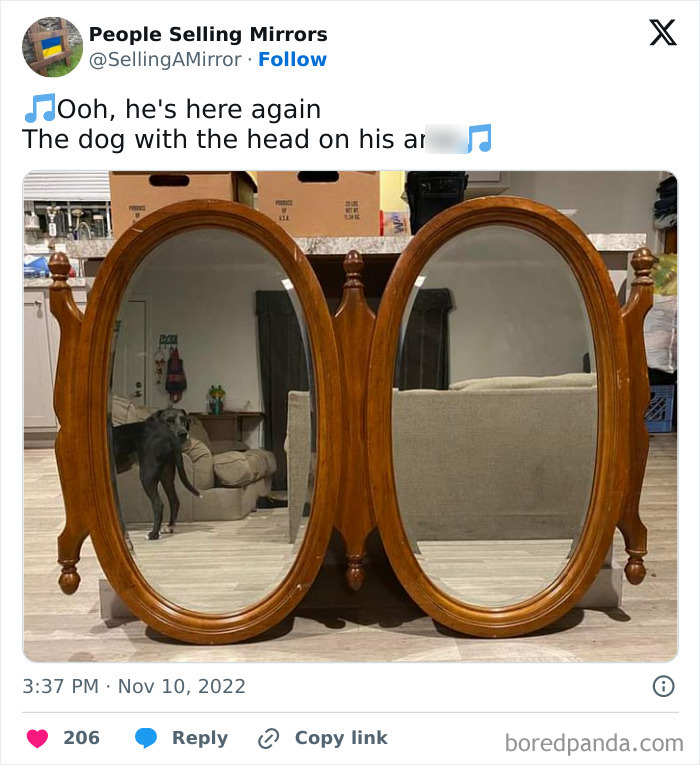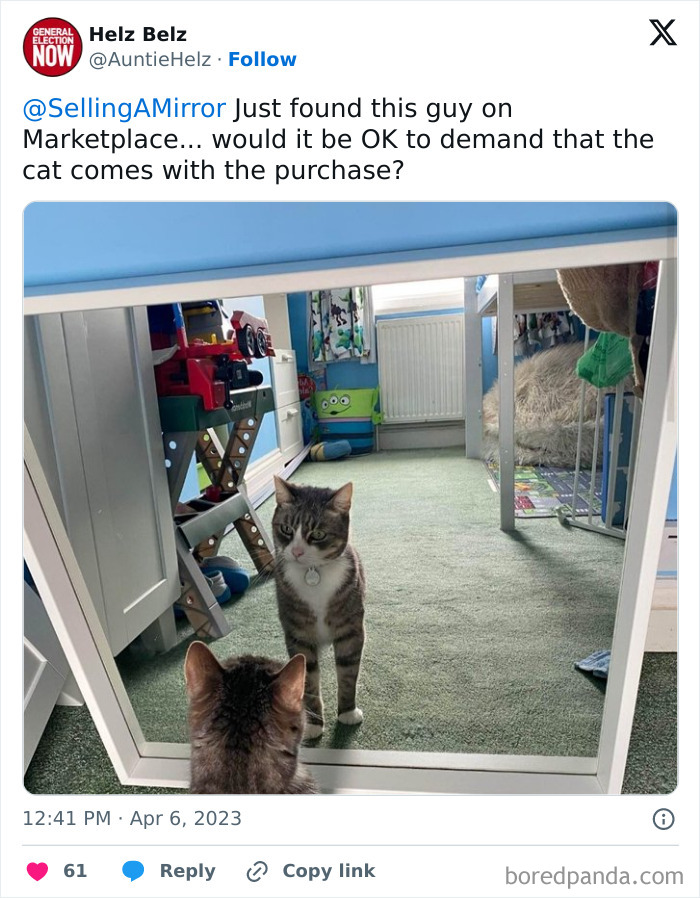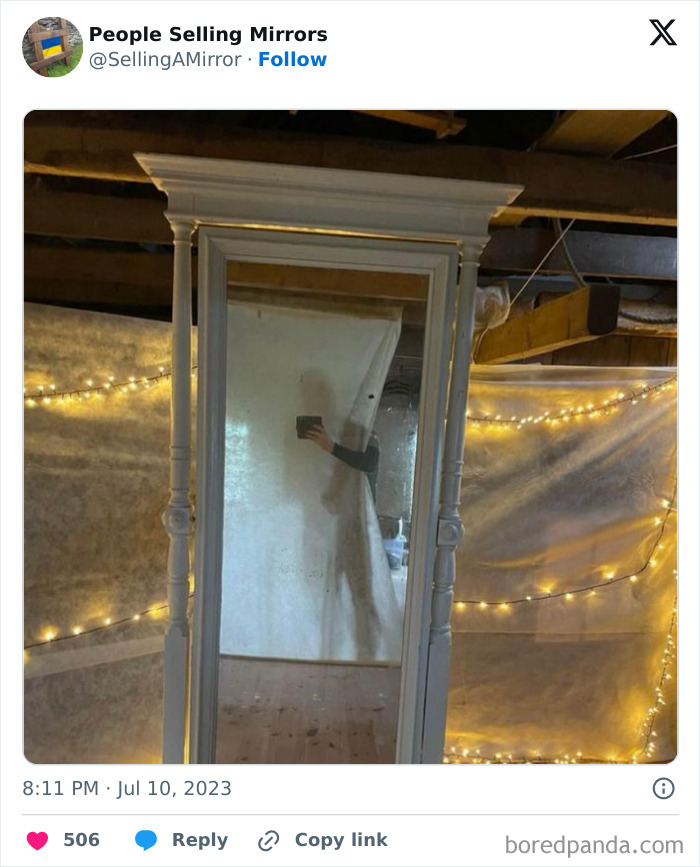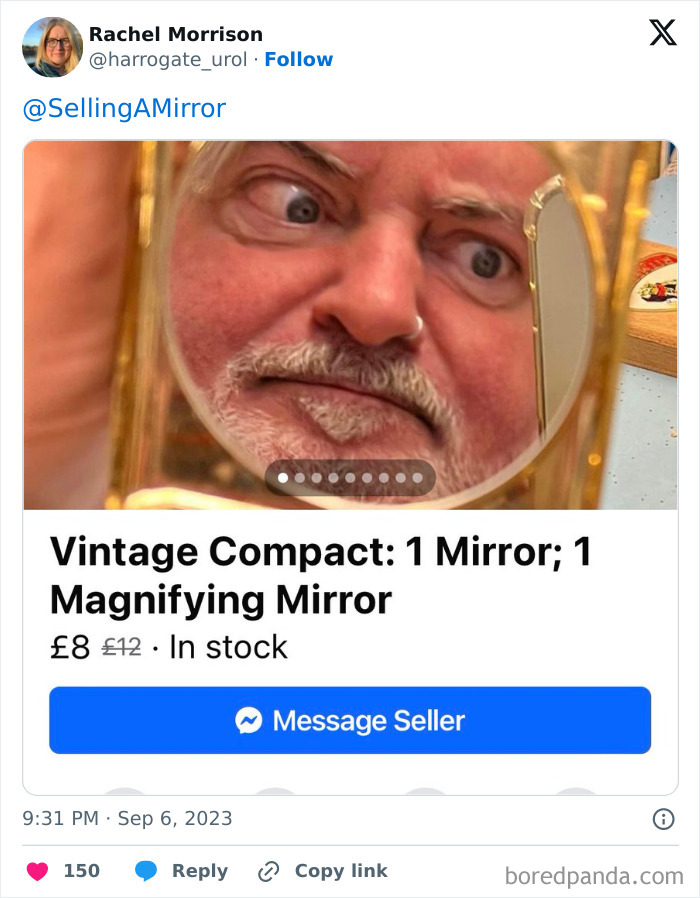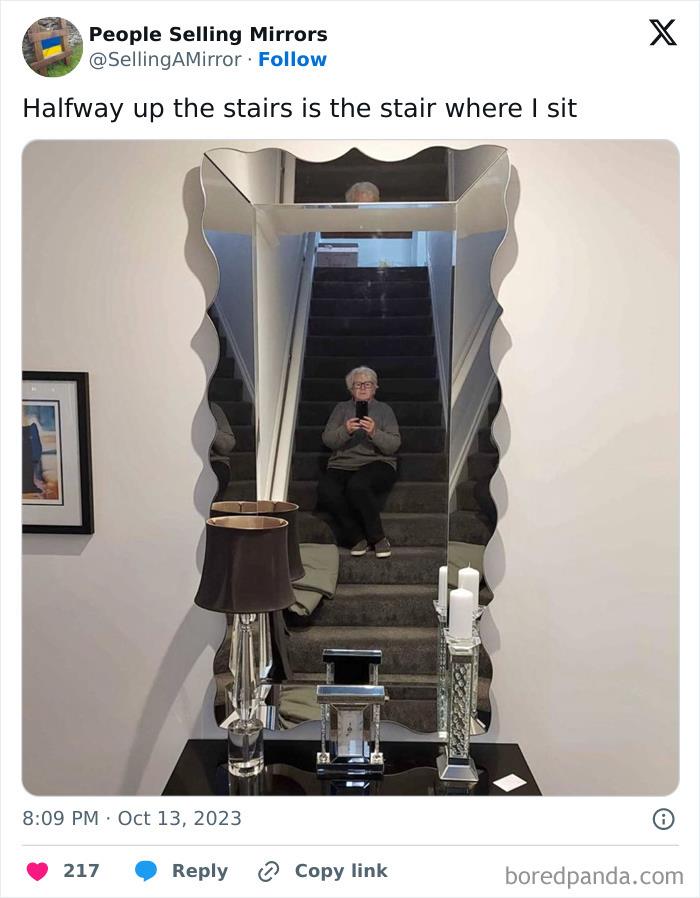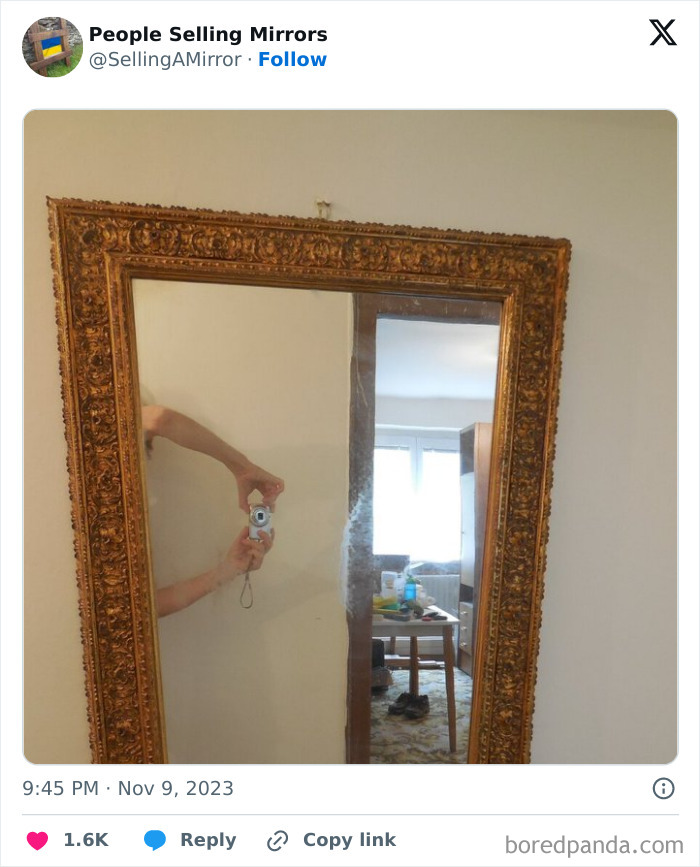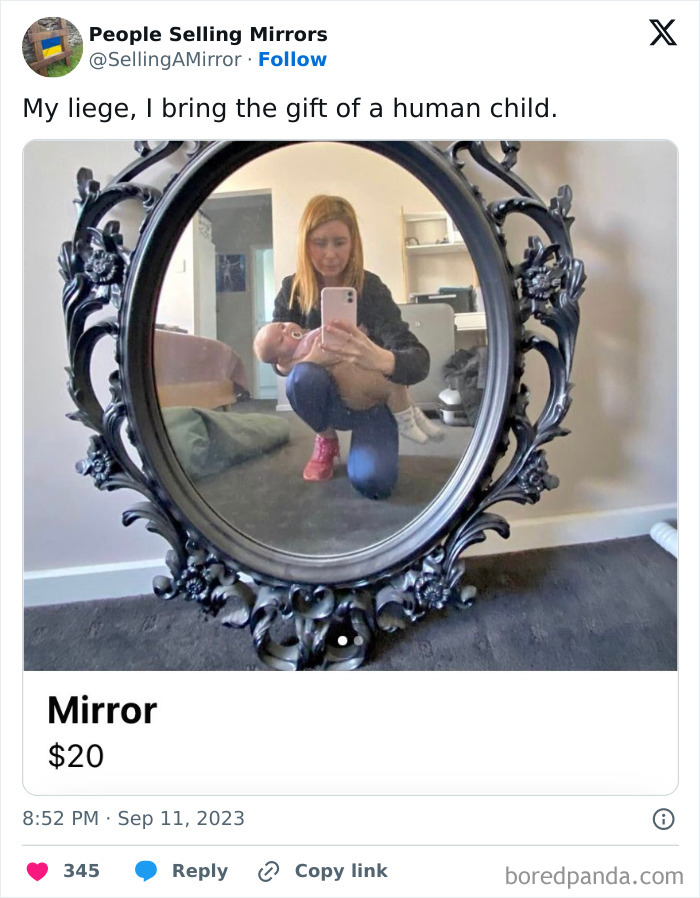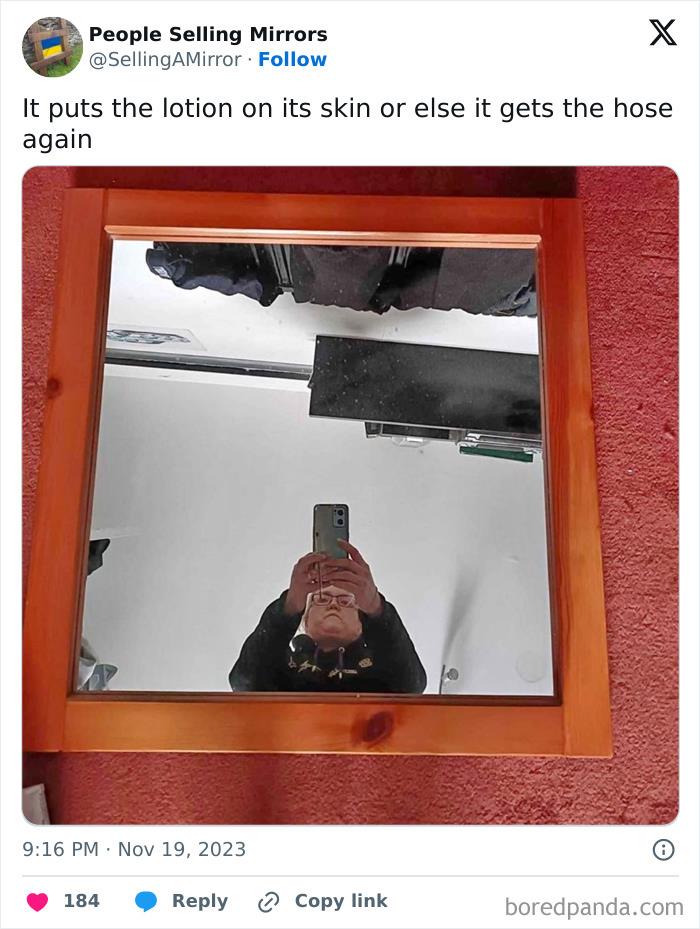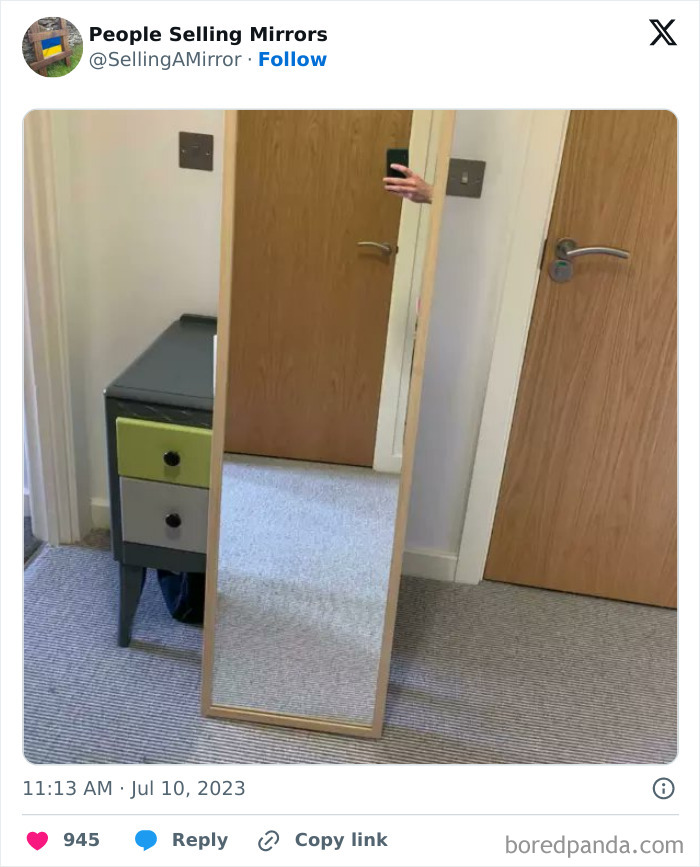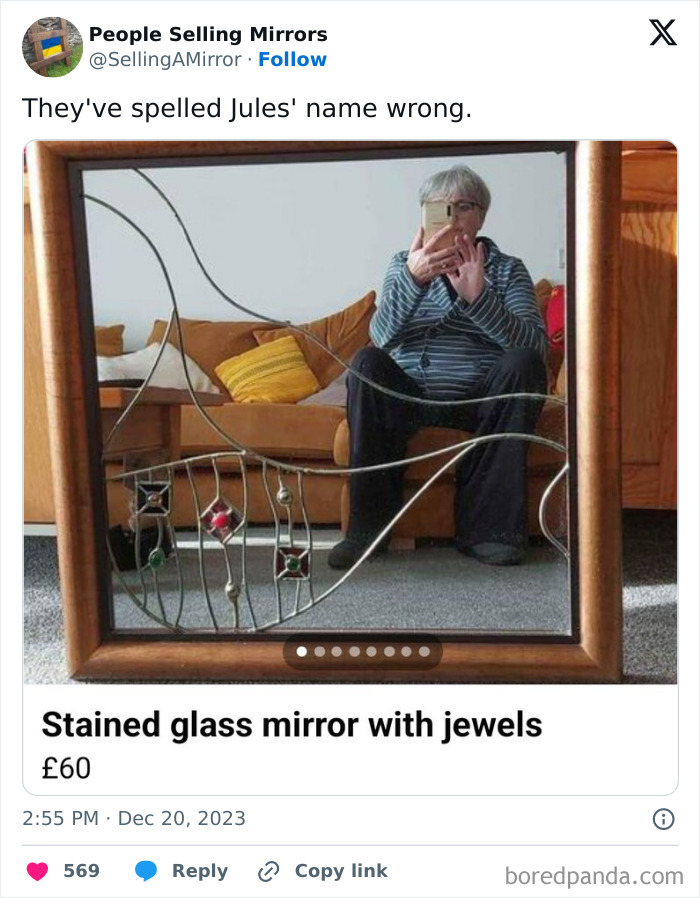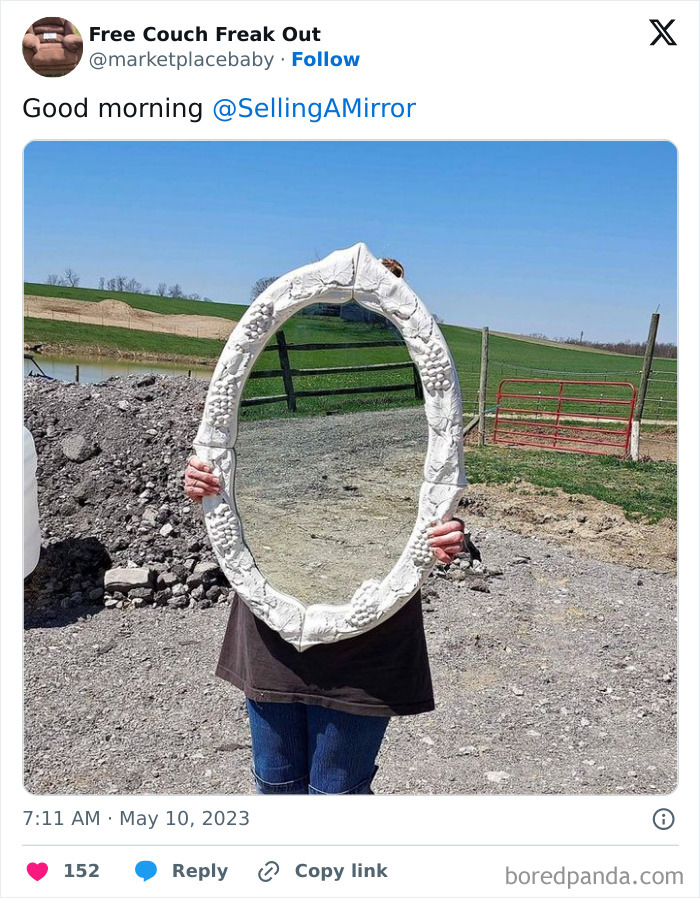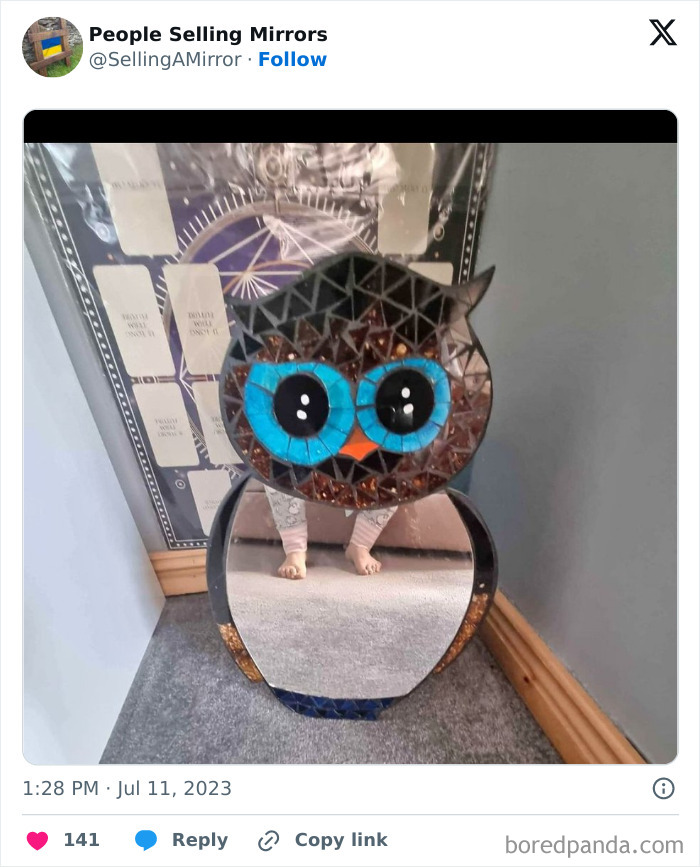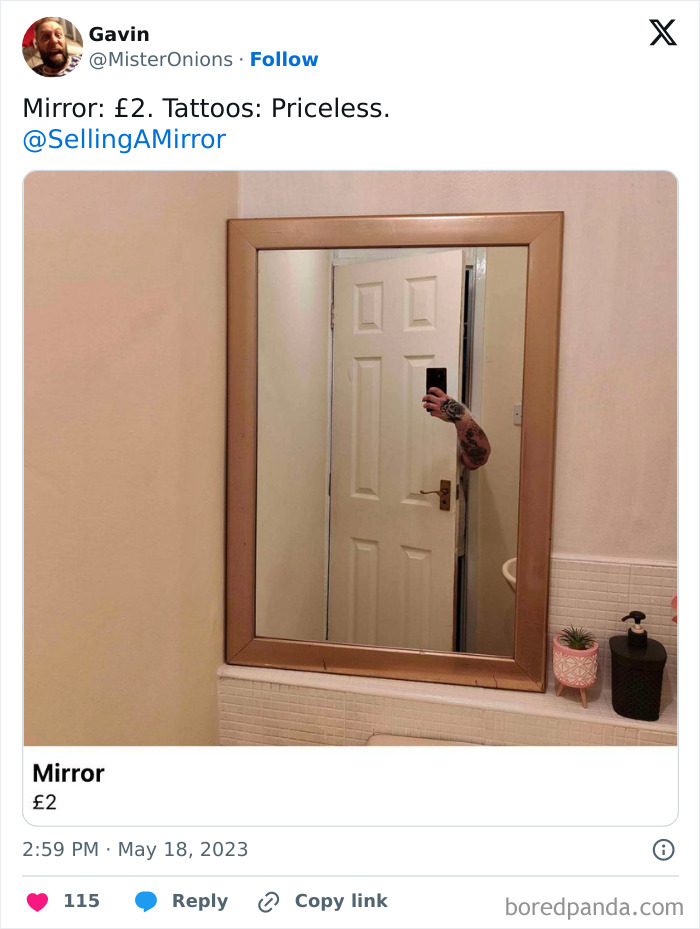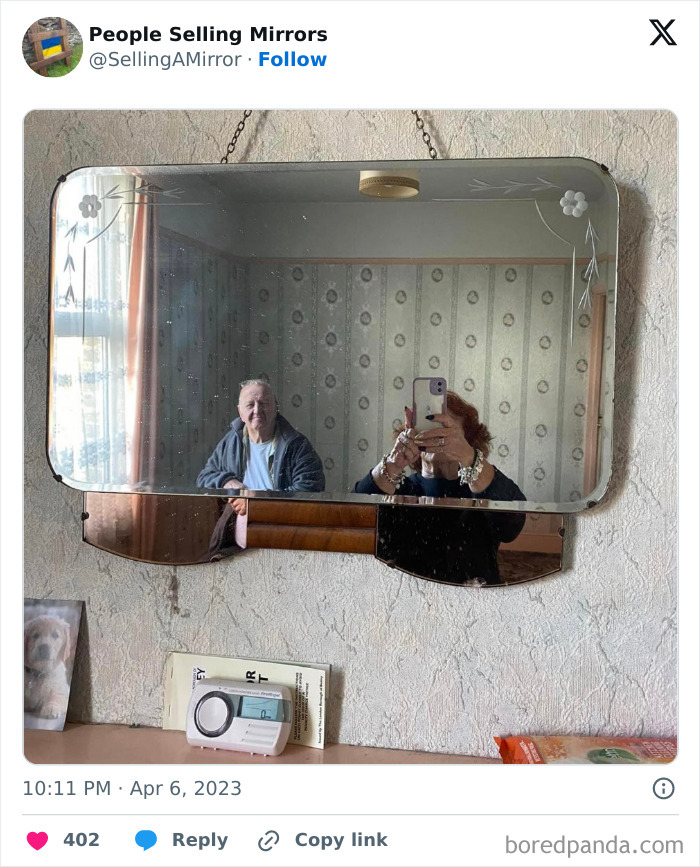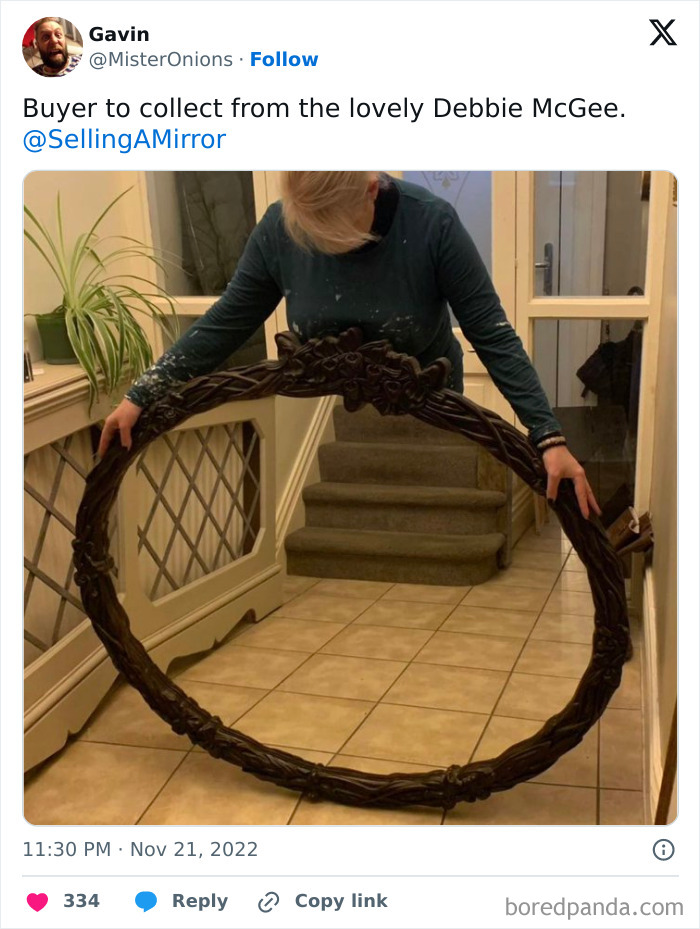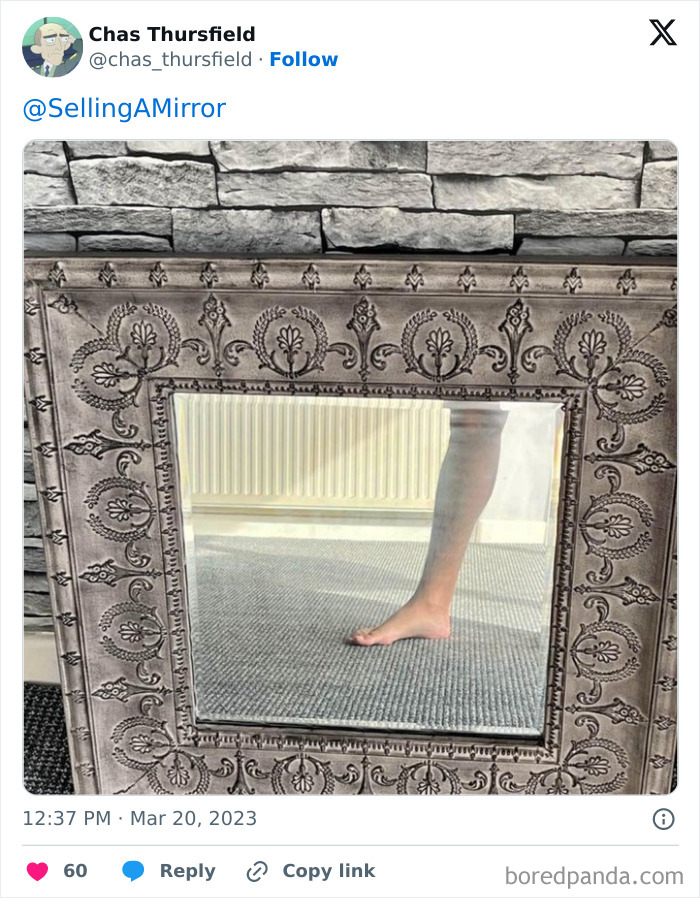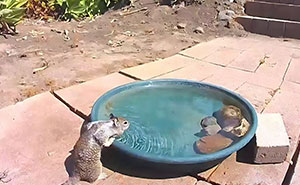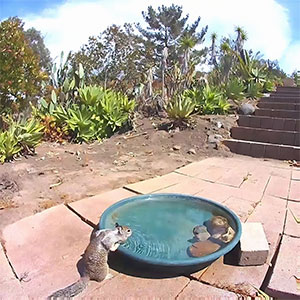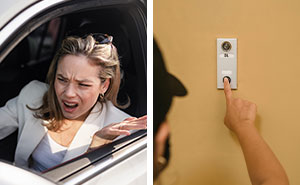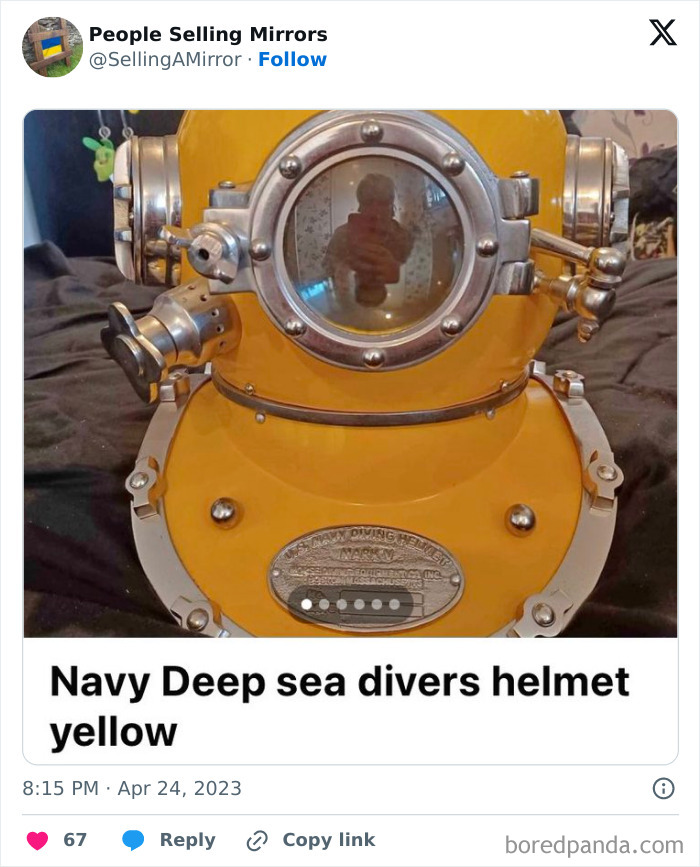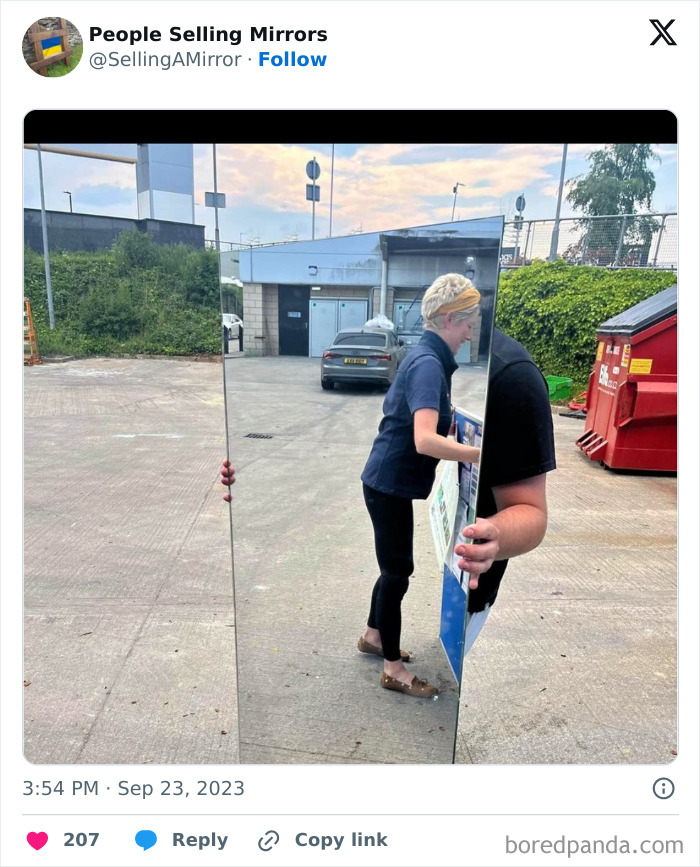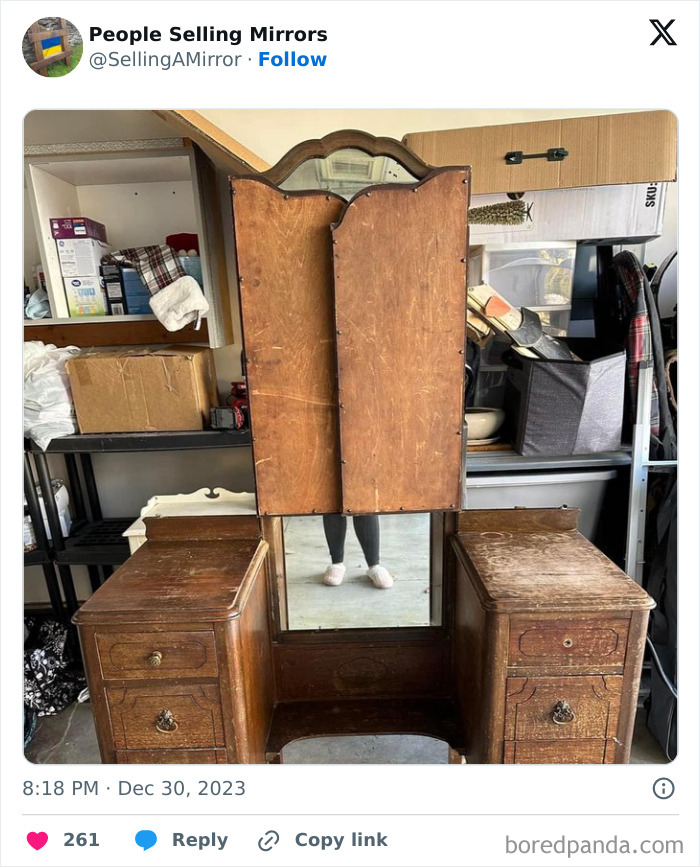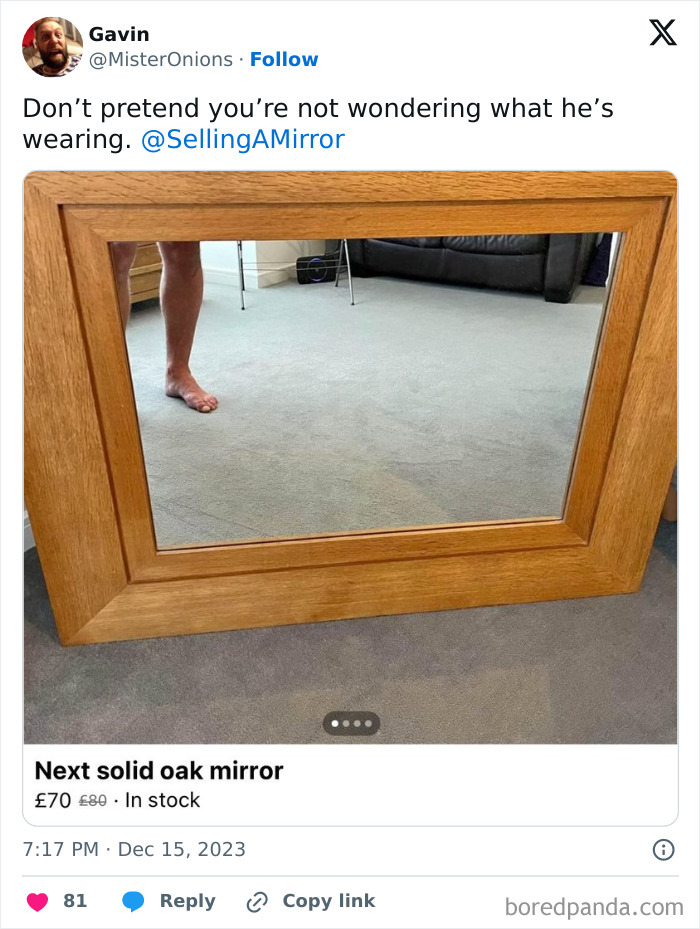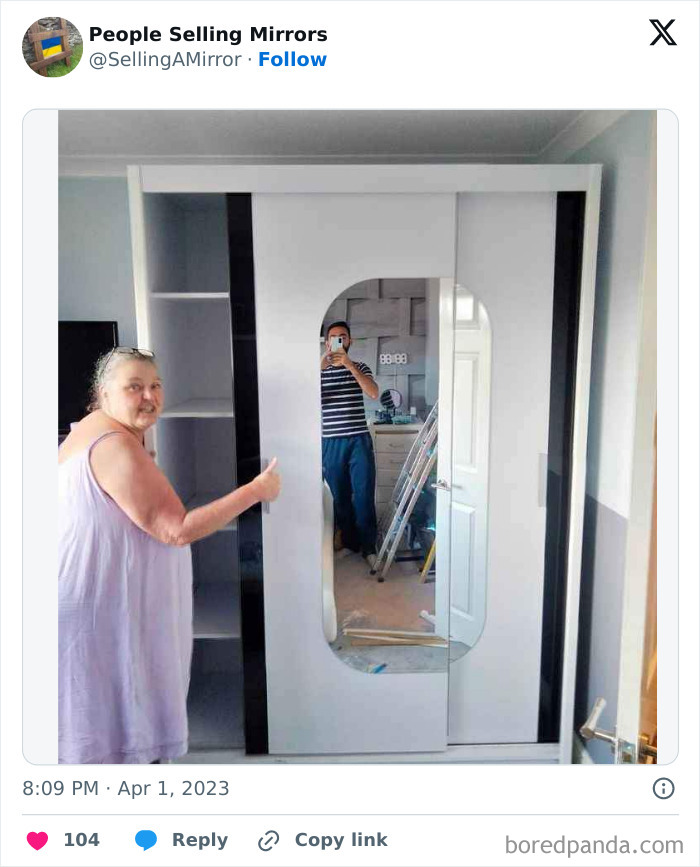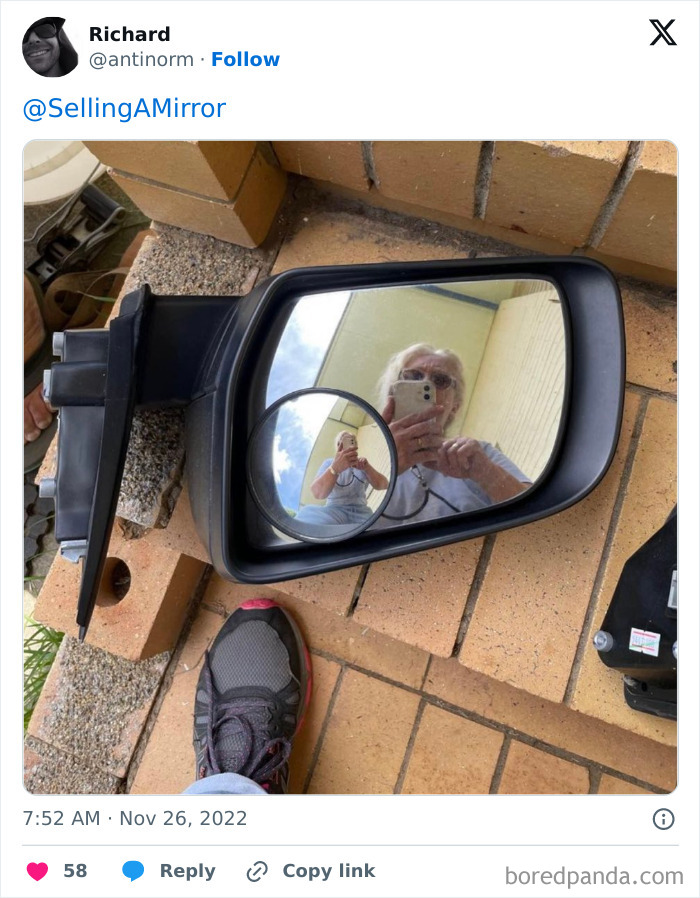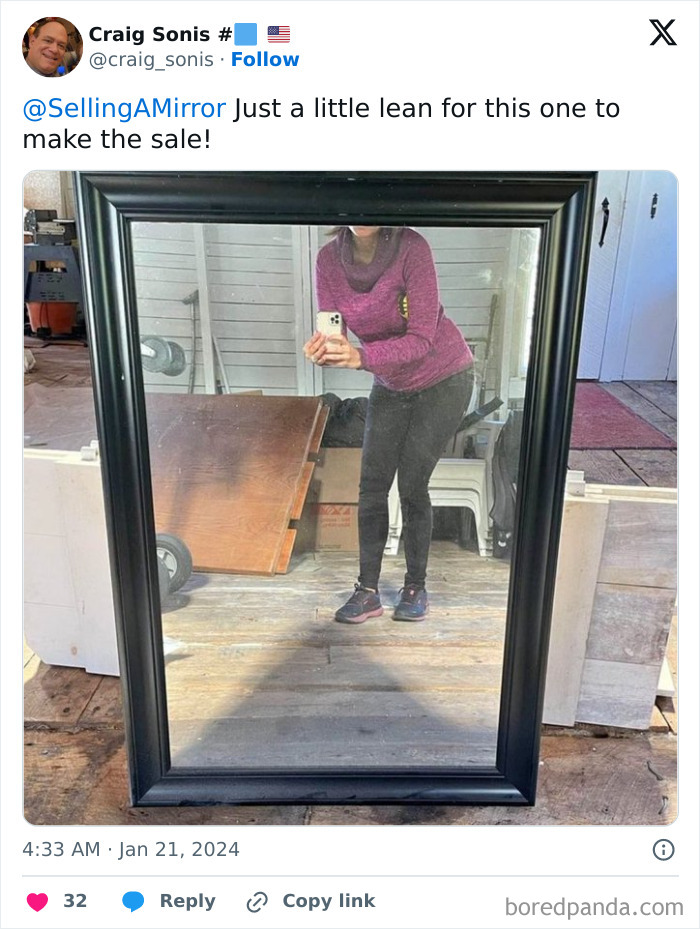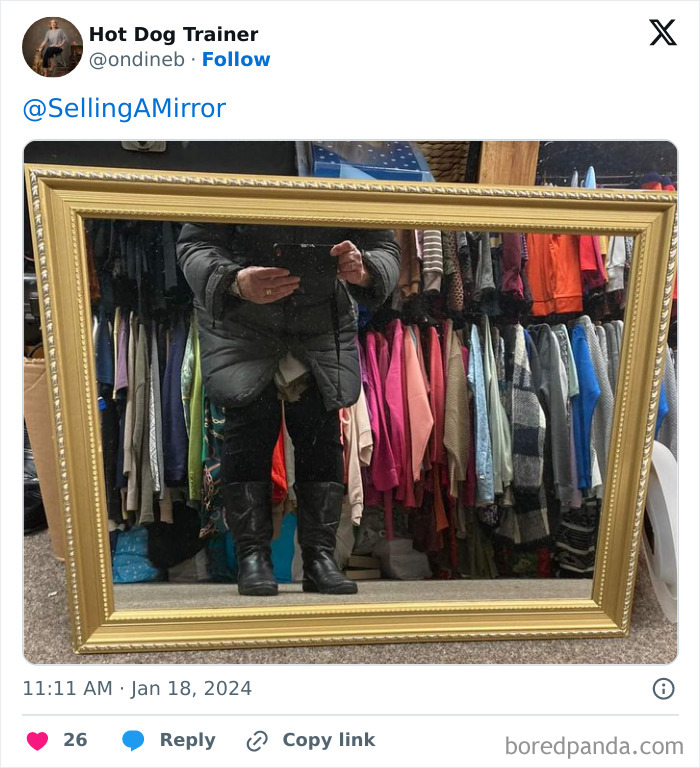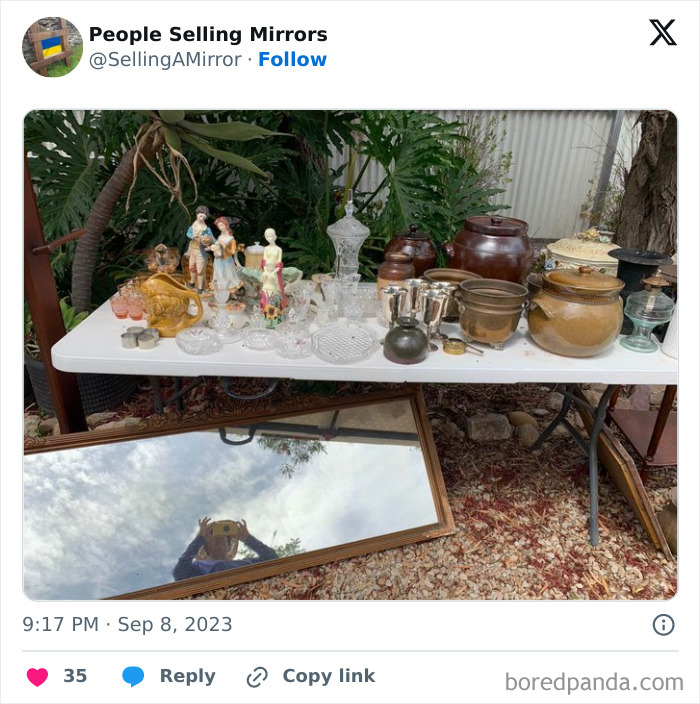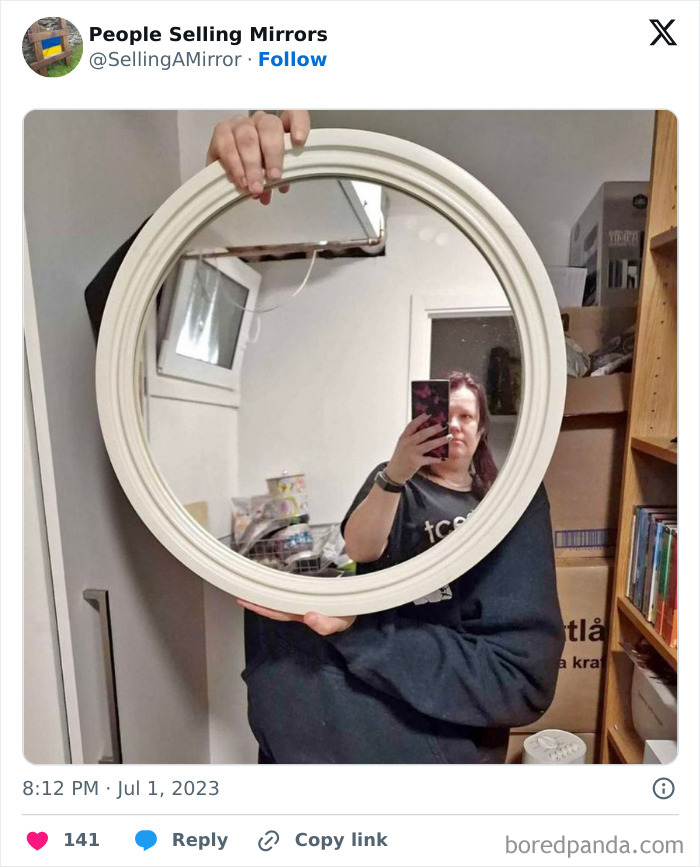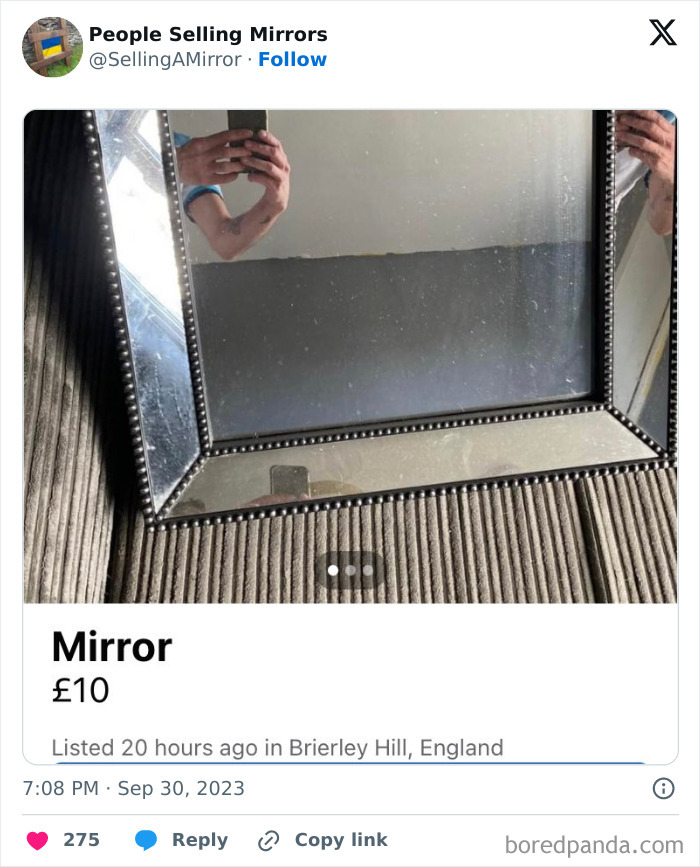But others can’t be bothered with said jazz; they simply want to take the picture, upload the item, and move on with their lives, which often results in some rather amusing photographs, especially when there are mirrors involved. Apparently, such instances are so common, there’s even an X (formerly Twitter) page dedicated entirely to ‘People Selling Mirrors’. Featuring everything from perfectly set compositions, to hilarious coincidences, and some less successful attempts, the posts ought to bring a smile to your face or at least provide some inspiration if you ever need to sell a mirror yourself; so scroll down to find some of them on the list below and enjoy. Below you will also find Bored Panda’s interview with the founder of The Institute For Behavior Therapy in New York City and a collector of “psycholectables”, Barry Lubetkin Ph.D., who was kind enough to answer a couple of our questions regarding vintage items. And while their existence might have been unknown before, that doesn’t mean they should go straight into the trash (depending on their state, of course). Selling them on one of the many marketplaces online or in a yard sale can be great alternatives, benefiting the seller, the buyer, and the environment, too. “On the other hand, purchasing a vintage item can also be very satisfying. Particularly if it reminds the buyer of something long lost or something that was once seen and desired, but never purchased.” According to him, it can be difficult to find true gems in antique shops or flea markets, but the sense of satisfaction and excitement that comes with finding something terrific makes the long wait and impatience well worth it. “Finding that gem leads to a sense of great pride that others have missed and you have found something either aesthetically or monetarily priceless.” The reason it’s important not to rush to throw things away is because of the mind-boggling number of tons people dump on the planet each year; according to The World Counts, it stands at around 2.12 billion tons annually. (Depending on where a person is from, they tend to generate up to 845 kilograms of municipal solid waste each year.) But the production process is only stage three of the item’s life cycle. While we might not think about it when we buy something, the journey of how that something got into our hands is a rather lengthy one. While recycling, for instance, is a significant step toward being more environmentally-friendly, it covers only one part of the item’s entire life cycle, which is why buying things second-hand can be a great alternative to encouraging the production of even more of them. “For a narcissistic person who looks in the mirror and gazes at their own reflection many times each day, the style, shape, and aesthetic of a mirror can be extraordinarily meaningful because for some, old mirrors make them look more handsome, more beautiful than the new cookie cutter types,” Dr. Lubetkin explained. “For people who are not narcissistic or overly self-involved in their looks, the type of mirror or the age of the mirror can seem quite irrelevant.” Follow Bored Panda on Google News! Follow us on Flipboard.com/@boredpanda! Please use high-res photos without watermarks Ooops! Your image is too large, maximum file size is 8 MB.






